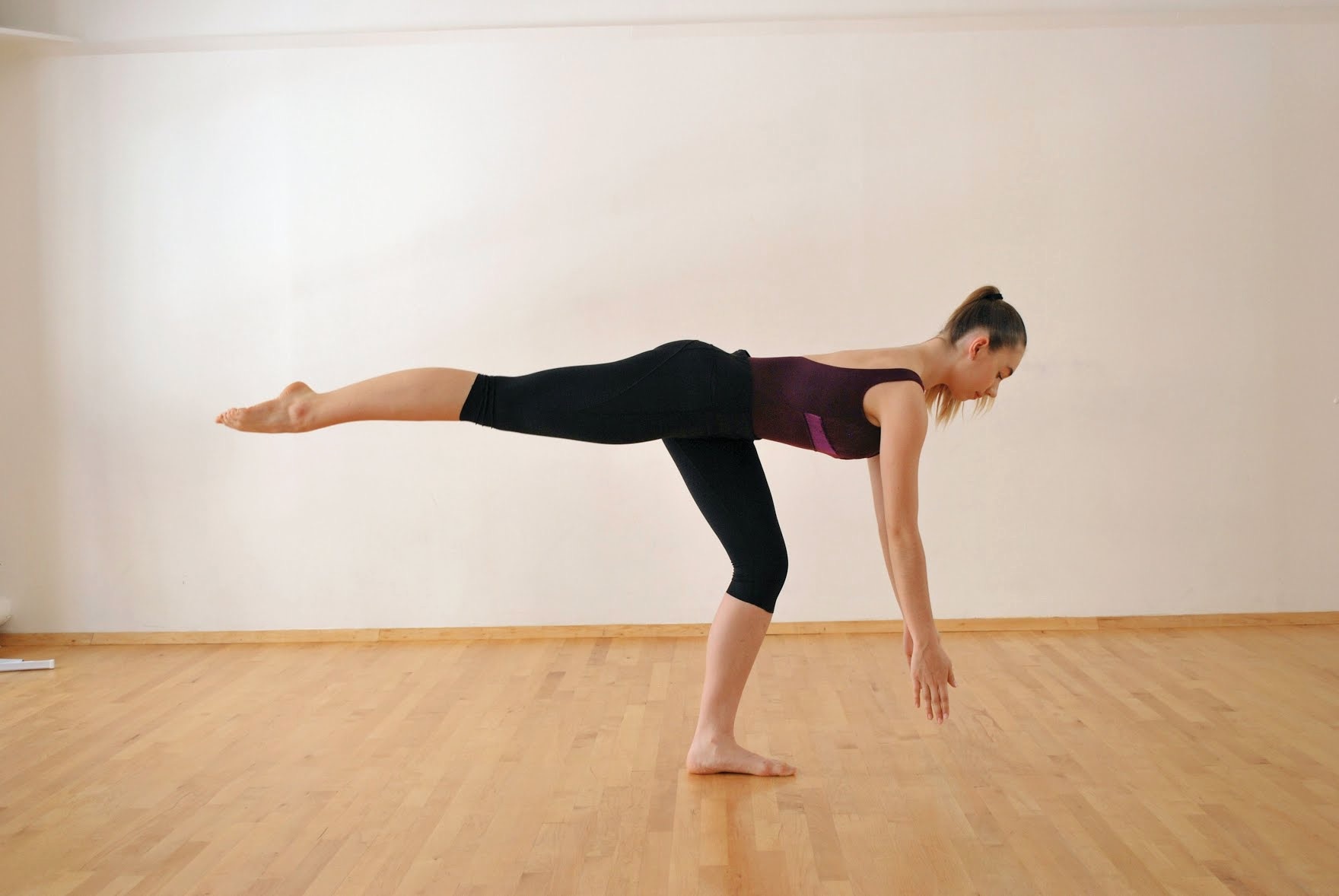If you're feeling wobbly in adagio or wish you could hold your piqué attitude a bit longer, there are ways to assess and improve your balance. Try these four exercises, recommended by Heather Southwick, Boston Ballet's director of physical therapy.
You'll need:
* painter's tape or masking tape
* TheraBand
* something sturdy to tie the TheraBand to, like a chair leg
* Airplane Series
The airplane test assesses dynamic balance, or how stable you are as you move through positions. "It can be a helpful indicator of where in the chain is difficult for you," says Southwick. This progression lets you focus on balance and strength simultaneously, while preparing you for adagio.
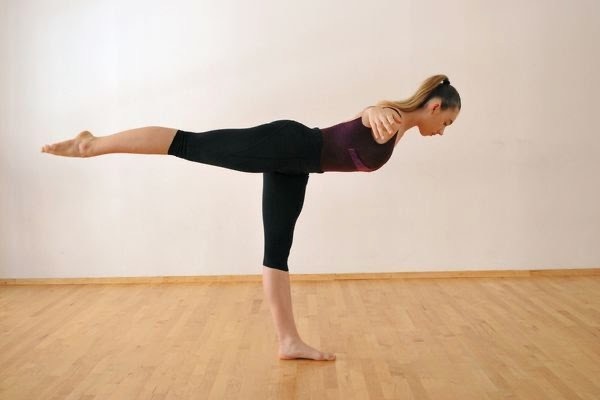
Start in parallel passé and extend to arabesque, creating a straight, horizontal line from head to toe. Hold your arms in a T, like an airplane.
Plié and straighten 5 times. (Work up to 10 repetitions.) If you're feeling stable, incorporate the arms, reaching toward the floor as you plié, and returning them to a T as you straighten.
Ask yourself: Can you maintain a flat line from your head to your toes and keep your pelvis even? "A lot of people will twist the pelvis or turn that leg out," says Southwick. Check your weight placement: Are you back in your heel, or are you too far forward on your toes?
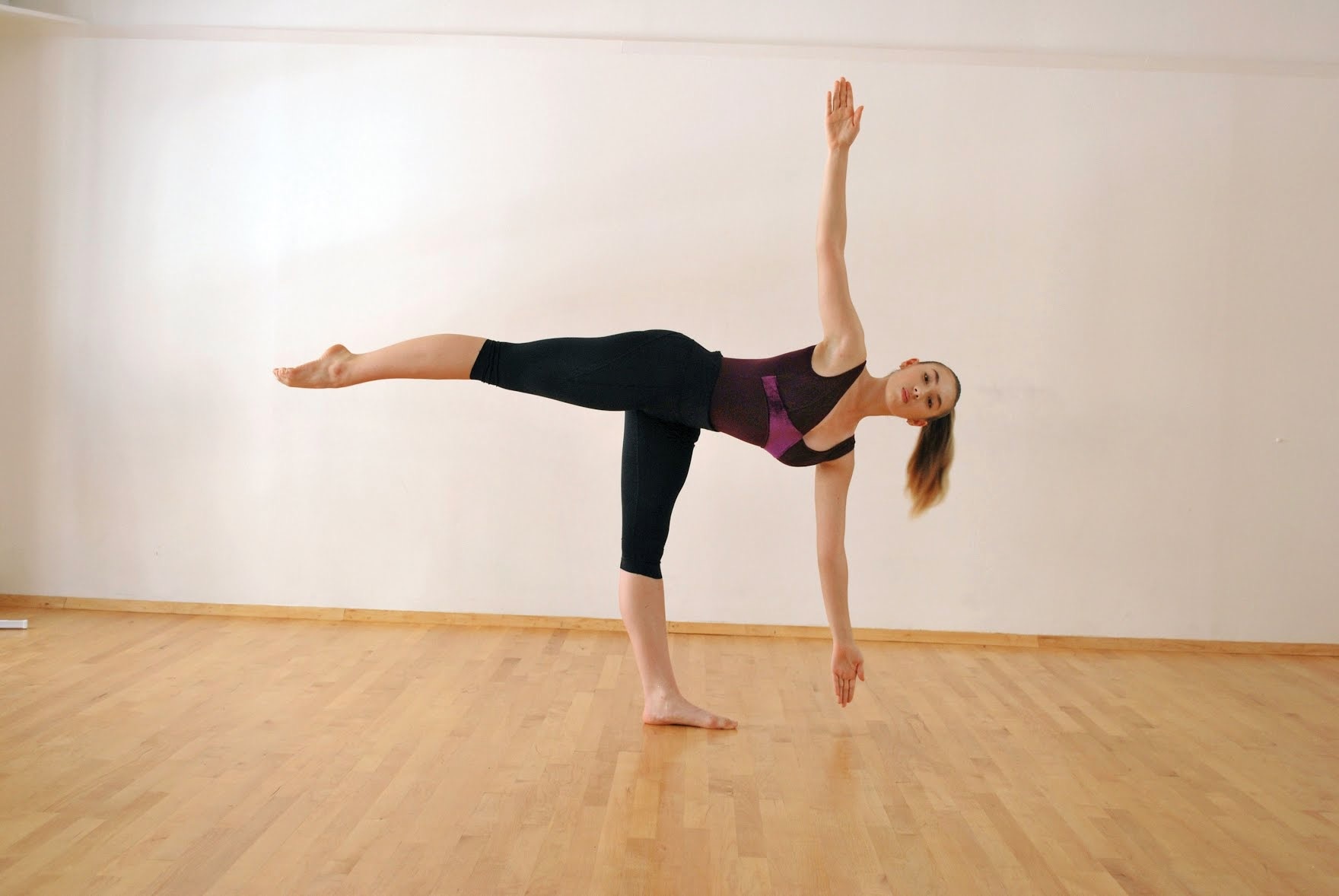
Add a progression: Standing on a straight leg, rotate the torso open so one arm reaches toward the floor and the other toward the sky. Return to the flat-backed arabesque position.
Single-Leg Balance with Eyes Closed

"One of the main tests that we do on professional dancers is to see if they can balance for 60 seconds with their eyes closed. Everyone should be able to do it for at least 30, on one leg, in parallel passé," says Southwick. If you're having trouble balancing, this test can reveal areas of weakness, like instability in the ankle, knee or hip.
Why parallel: Testing your balance in parallel is important, she says, because your base of support is narrower versus when you're working in turnout.
Injury recovery: If you've had to scale back due to an injury, you may have lost some of your proprioceptive feedback (a sense of where the body is in space). Closing the eyes and balancing helps improve this without relying on your vision.
Make it more challenging: Stand on a less stable surface, like a memory foam pillow or a BOSU ball, and repeat the balance with eyes open.
TheraBand Clock Exercise
Tie a band around something stable, like the leg of your bed or a table. Stand in parallel with your right leg in the loop (and the support point to your right). Using both feet, relevé and lower into a plié with control. Rotate an eighth of a turn to your left, and repeat the relevé and plié. Continue working around the circle, like a clock, until you are facing backwards. (For one position, both feet will be wound up in the band. That's okay.) Repeat on the other leg. This can also be done turned out.



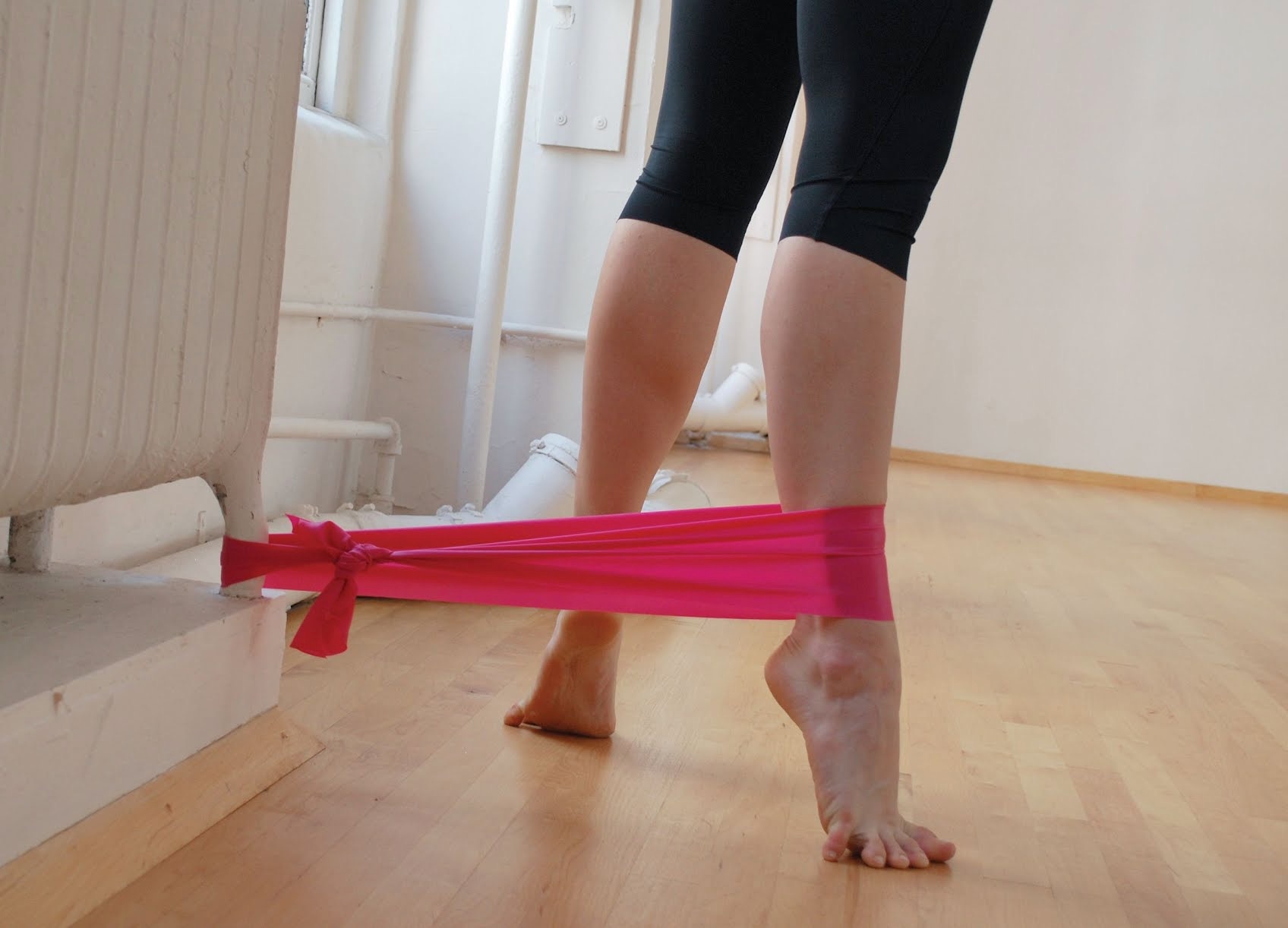
Watch your alignment: "The TheraBand is pulling, so you have to work to maintain balance with good alignment," says Southwick. Make sure you don't sickle your ankle or overcompensate in the other direction.
Make it more challenging: Try the series balancing on one leg, with the other foot in coupé or passé.
Star Excursion Balance Test
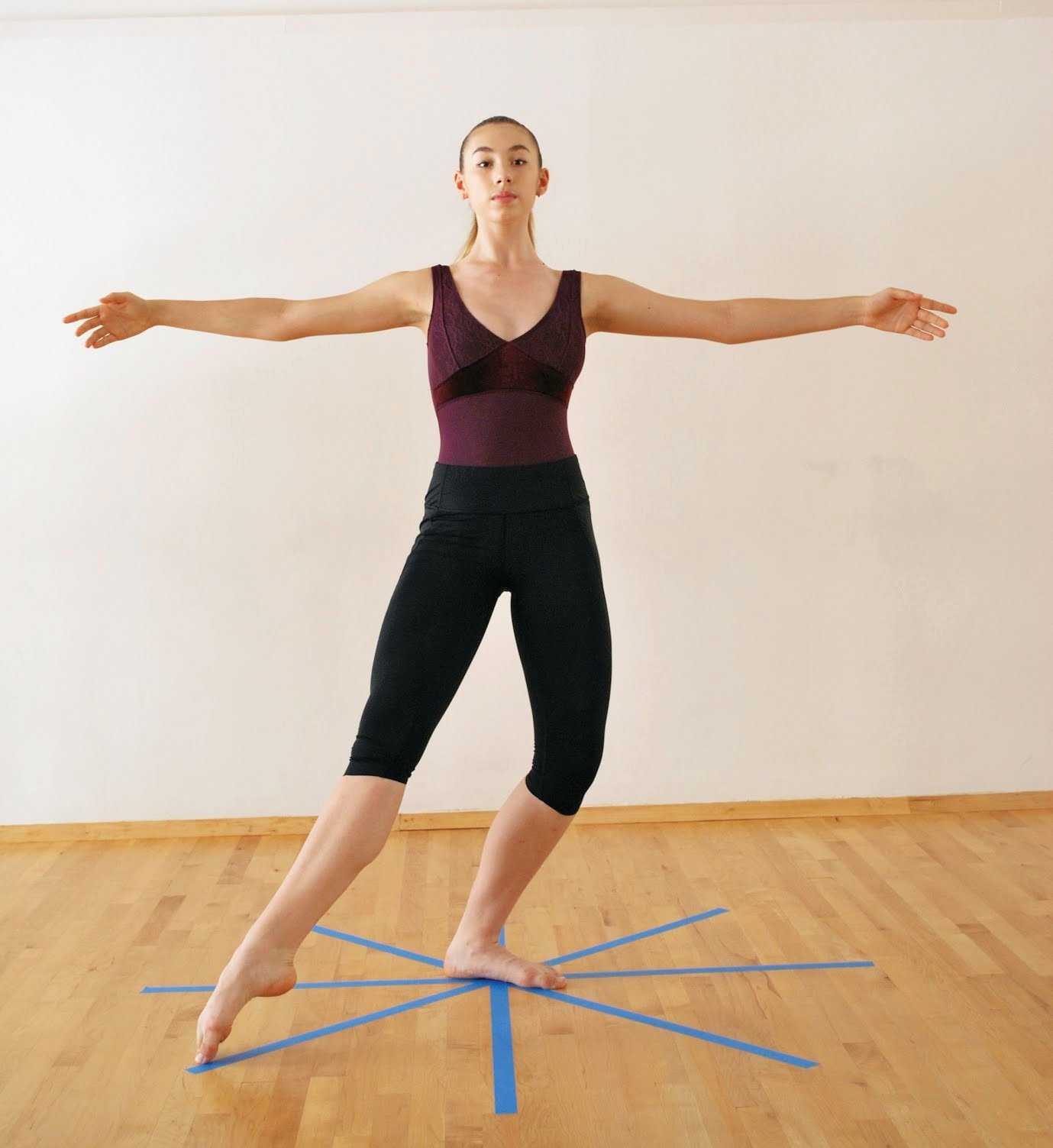
Tape a starburst pattern on the floor and stand in the middle of it with your supporting leg in plié. Reach the working leg out in tendu, along the tape line directly in front of you, as far forward as you can. Return to center and work your way around the star, doing a tendu along each line. (Try to keep the hips square, though this won't be possible in all positions.) Southwick recommends practicing this in both parallel (see left) and turnout.


Why it's good for dancers: It requires strength, flexibility and proprioception. "The working leg is basically going on an excursion," Southwick says of the exercise's name. As you work your way around the star, you're experiencing different forces on your standing leg.
Make it more challenging: Holding the arms in second provides the most stability, but you can also try it with your arms overhead in fifth or crossed in front of you. "You're trying to simulate things you might do in adagio," says Southwick.





